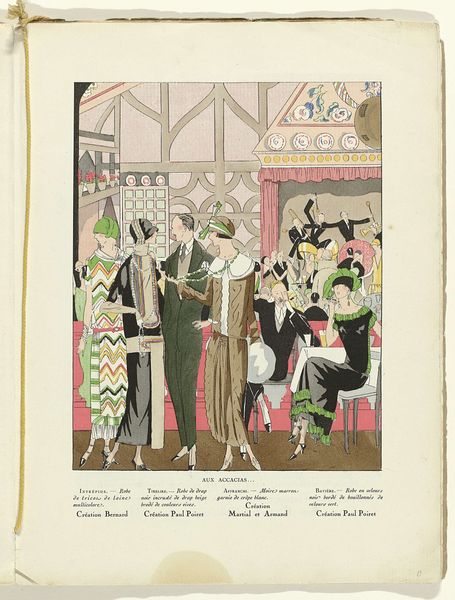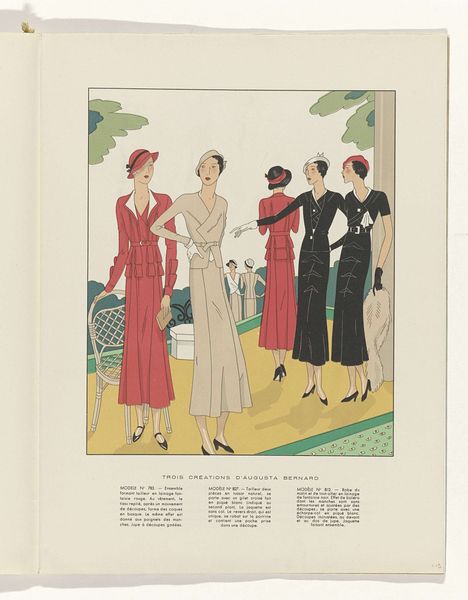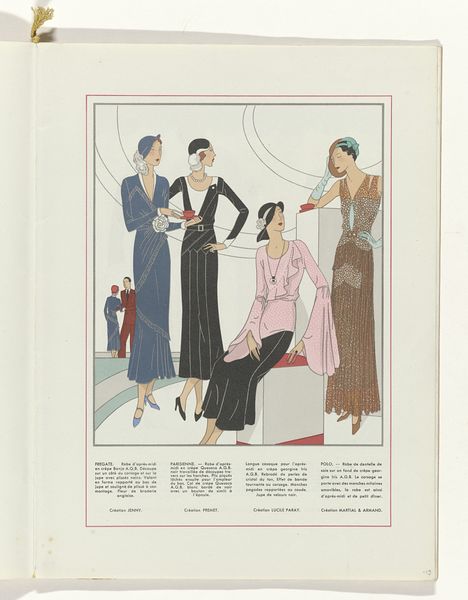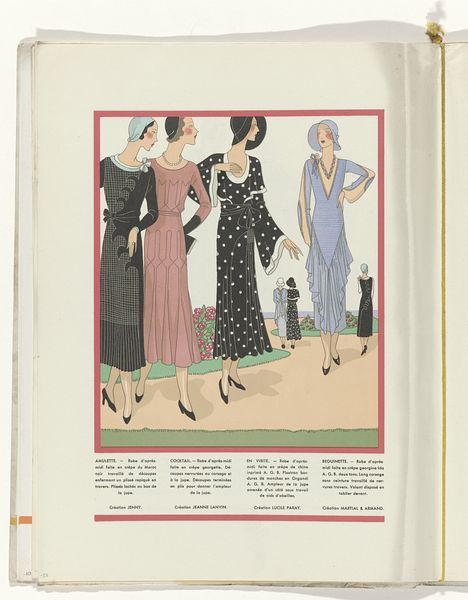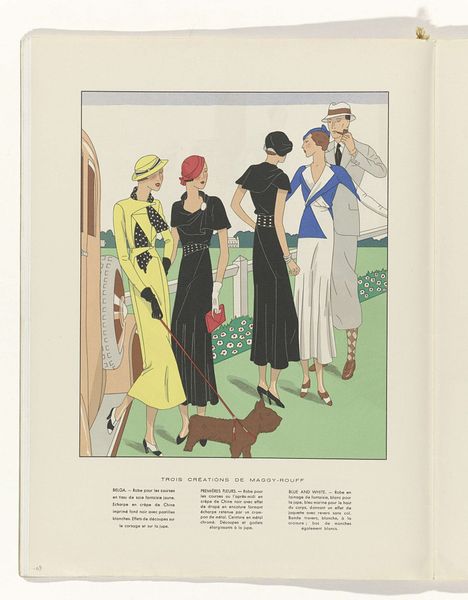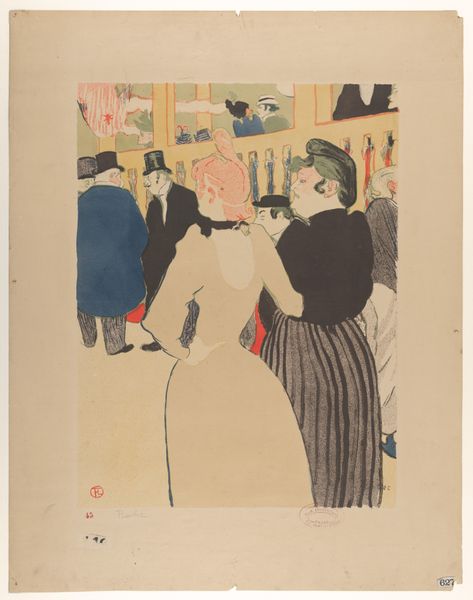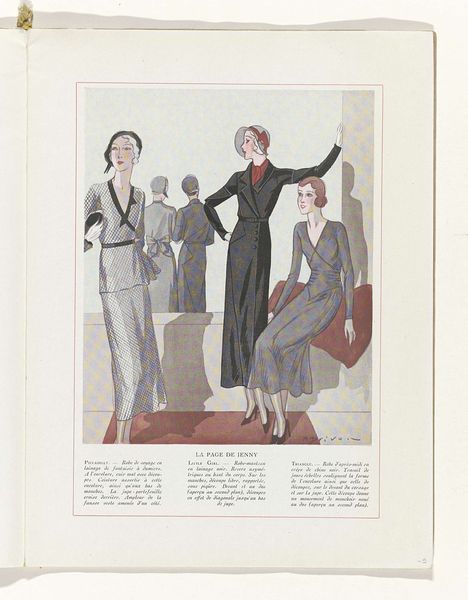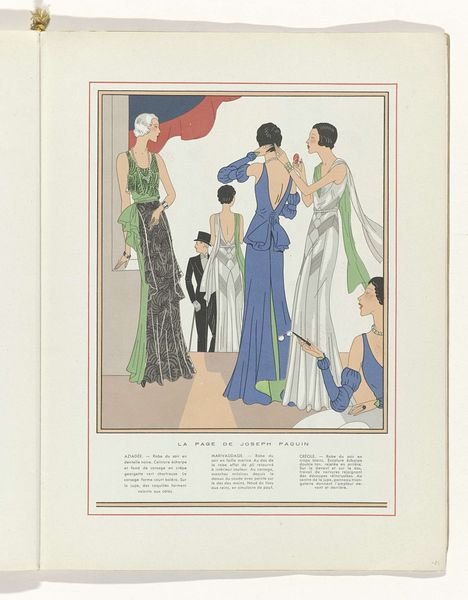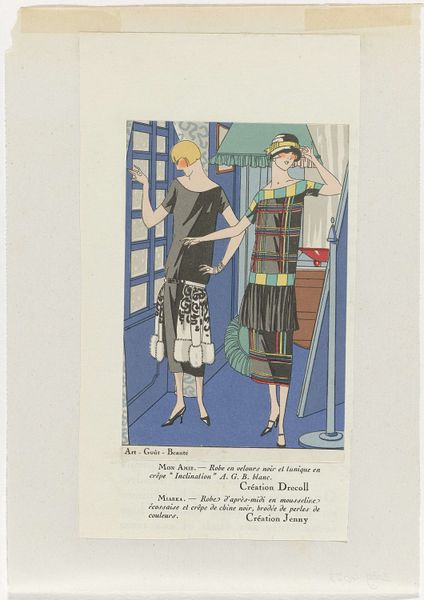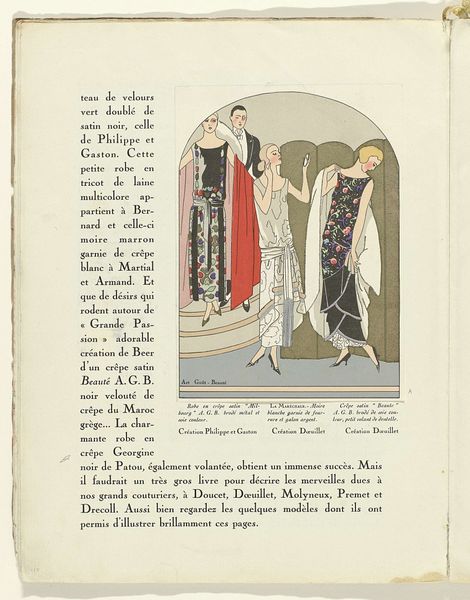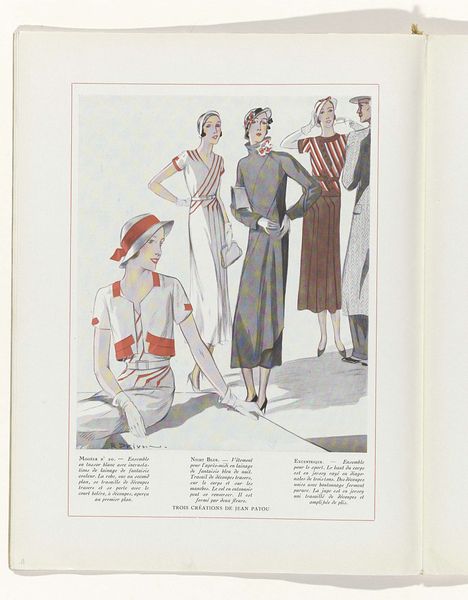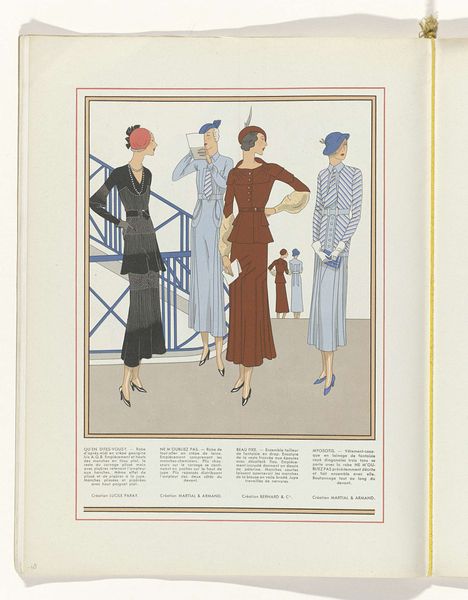
Art - Goût - Beauté, Feuillets de l' élégance féminine, Janvier 1924, No. 41, 4e Année, p. 15: Cabaret Caucasien (...) 1924
0:00
0:00
Dimensions: height 315 mm, width 240 mm
Copyright: Rijks Museum: Open Domain
Editor: So, this print is titled "Art - Goût - Beauté, Feuillets de l'élégance féminine, Janvier 1924, No. 41, 4e Année, p. 15: Cabaret Caucasien (...)" from 1924. It’s mixed media on paper, depicting figures in a cabaret scene. The clothes look very Art Nouveau, and it gives a real sense of that era's style. What do you notice about the materials and production in this piece? Curator: Well, it's fascinating to consider this print as a manufactured object meant for a specific consumer. The very title, emphasizing "taste" and "beauty," tells us this was meant to influence ideas about desirable lifestyles. The mixed-media process itself– likely a combination of printing techniques with hand-applied color – points to a specific moment in the industrialization of art. How does this mass production challenge the traditional concept of the unique art object? Editor: I see what you mean. It’s less about the artist’s hand and more about circulating an idea, a fashion, to a wider audience. So, the image becomes almost like an advertisement? Curator: Precisely! And who are these consumers? Analyzing the clothes and implied setting, we can ask, who could afford the lifestyle represented? Whose labor created these garments? What impact did the "Cabaret Caucasien" theme, inspired from folk Russian cultures, have on those who viewed this image in their consumption of fashion? What socio-economic conditions made such imagery appealing? Editor: So, instead of just seeing an elegant image, we should be asking about the labor and systems behind its creation and consumption. I had never thought about it in that light. Thank you. Curator: Exactly. By focusing on these aspects, we can uncover hidden power structures embedded in what might seem like a purely aesthetic image. Editor: This gives me a lot to think about regarding the relationship between art, production, and society.
Comments
No comments
Be the first to comment and join the conversation on the ultimate creative platform.
